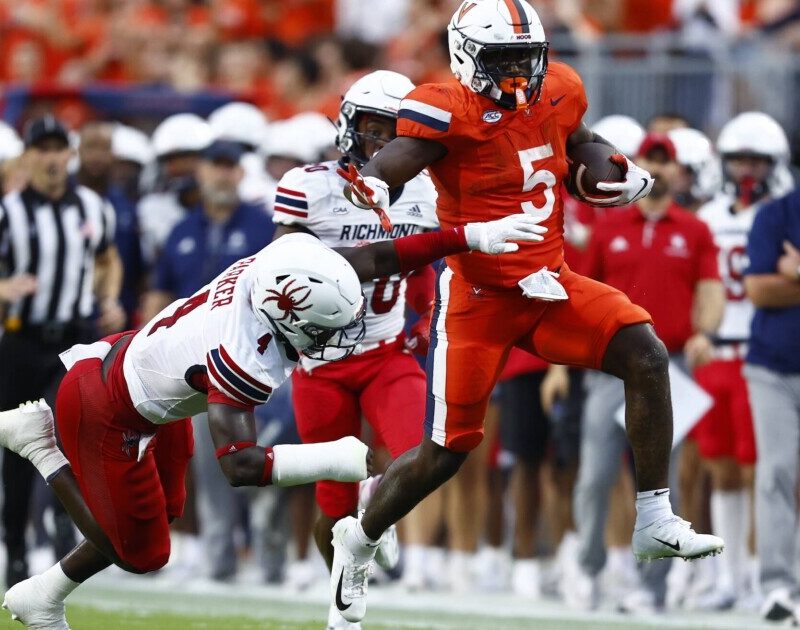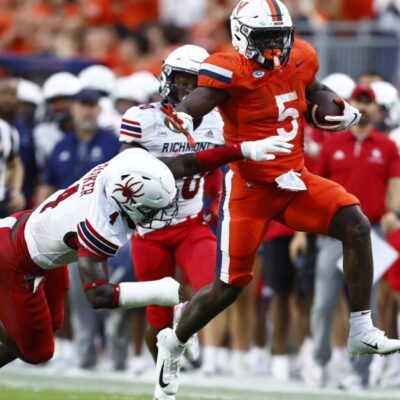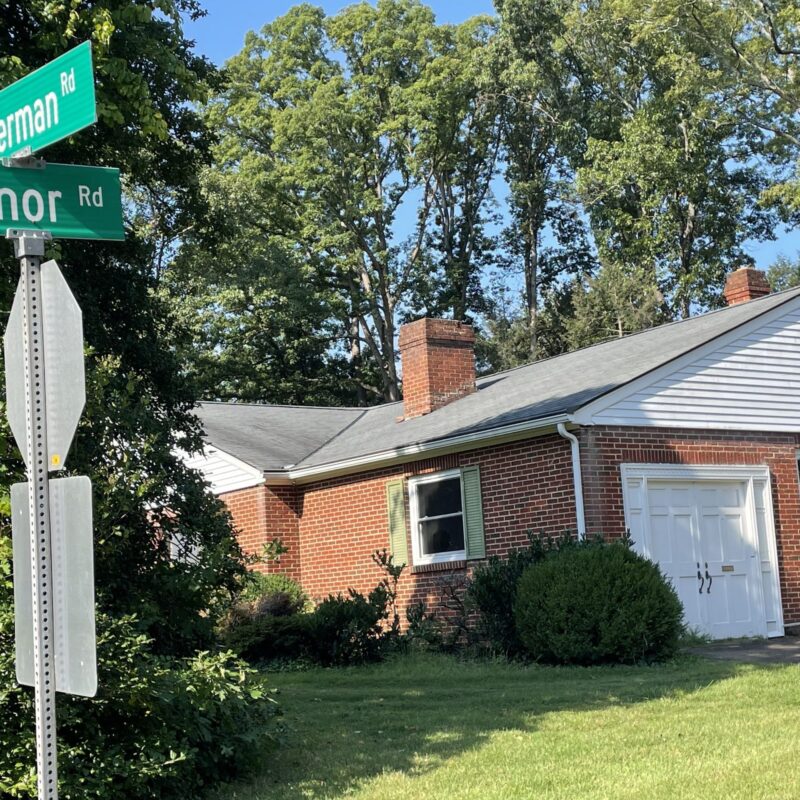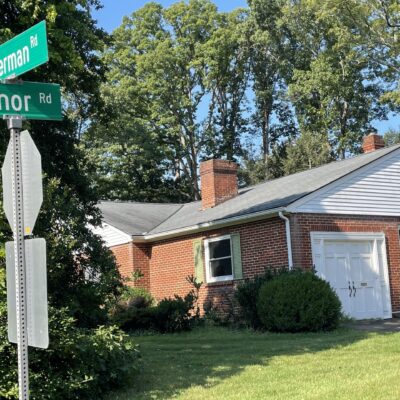“Chance of showers” is one of the most familiar refrains of late summer, echoing virtually every morning from TVs and radios. But the number of showers actually hitting our area—and, most importantly, filling our reservoirs—has been next to nothing in the past month, leaving our area vulnerable to a third consecutive year of drought restrictions. As of August 18, reservoir levels were down to 80.3 percent of usable capacity from 97.5 percent of capacity at the end of June.
“In June and early July, we were getting a fairly frequent amount of thunderstorm activity,” says Tom Frederick, executive director of the Rivanna Water and Sewer Authority (RWSA). “The end of July, that ceased and we’re going on about a month now of very dry weather. We’ve seen stream flows drop dramatically.”
 The South Fork Rivanna Reservoir was down 2.3′ at press time, an unusual low caused by a dearth of rainfall in the past month. |
At the end of August last year, reservoir levels were at 91.6 percent—and we were in the midst of mandatory restrictions and the worst drought since 2002. Demand last week fluctuated between 10.7 million gallons a day and 11.3 million gallons a day.
Frederick said that RWSA would likely run its predictive model late last week, though no announcement of a change in drought status came by press time. Stay tuned—we could be in for a third consecutive year of drought restrictions.
Looking at a water system problem with a much longer time-line, a task force looking at the issue of South Fork Rivanna Reservoir maintenance met for the first time August 13. The 13 member committee is a by-product of the 50-year water supply plan controversy, which peaked this spring before the city and council reaffirmed their support for the plan.
Built in 1966, the South Fork reservoir’s greatest strength is its 259 square mile watershed, making it easy to keep full, but that watershed contributes to its greatest weakness, a propensity to silt in. An average of 15 million gallons of storage capacity are lost each year, leading to calls that it should be dredged before it becomes a swamp.
But there was little talk of dredging at the two-hour August 13 meeting, which instead focused on providing the task force members with background on the reservoir—its use for fishing (apparently a good spot for large mouth bass), its limited public access (neighbors have quashed previous attempts to make it more accessible), the limitations for rowers (siltation is cutting off rowing channels), its water quality (usually good, but trickier to treat because of sediment), and previous efforts to study its sediment and to map its underwater channels. None of the speakers directly addressed one of the biggest questions: Will the reservoir become a stinking mud flat if it is never dredged?
At the end of the meeting, some tension emerged on how to talk about dredging as well as the subject of public input. City Council representative Holly Edwards hoped there would be the chance for the public to speak at the next session, but after an uncomfortable silence, others suggested that public input come only at a meeting entirely dedicated to it.
The task force members plan to take a 7am trip out on the reservoir courtesy of UVA rowing coach Kevin Sauer before they reconvene for more information—and then begin the potentially politically charged task of coming to consensus on a recommendation.
Edwards, a nurse by trade, analogized the reservoir to a sick patient. Now that she’s looked at its charts, “I need to go see my patient.”
C-VILLE welcomes news tips from readers. Send them to news@c-ville.com.





